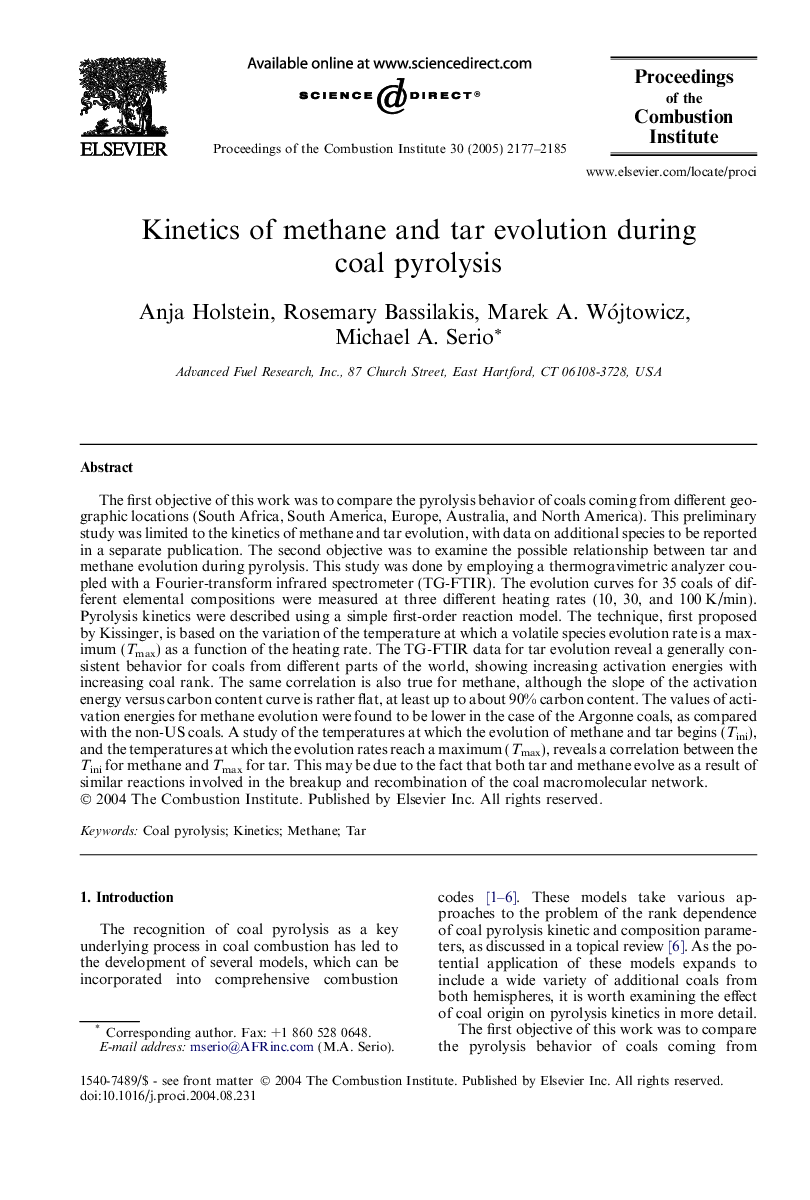| Article ID | Journal | Published Year | Pages | File Type |
|---|---|---|---|---|
| 240962 | Proceedings of the Combustion Institute | 2005 | 9 Pages |
The first objective of this work was to compare the pyrolysis behavior of coals coming from different geographic locations (South Africa, South America, Europe, Australia, and North America). This preliminary study was limited to the kinetics of methane and tar evolution, with data on additional species to be reported in a separate publication. The second objective was to examine the possible relationship between tar and methane evolution during pyrolysis. This study was done by employing a thermogravimetric analyzer coupled with a Fourier-transform infrared spectrometer (TG-FTIR). The evolution curves for 35 coals of different elemental compositions were measured at three different heating rates (10, 30, and 100 K/min). Pyrolysis kinetics were described using a simple first-order reaction model. The technique, first proposed by Kissinger, is based on the variation of the temperature at which a volatile species evolution rate is a maximum (Tmax) as a function of the heating rate. The TG-FTIR data for tar evolution reveal a generally consistent behavior for coals from different parts of the world, showing increasing activation energies with increasing coal rank. The same correlation is also true for methane, although the slope of the activation energy versus carbon content curve is rather flat, at least up to about 90% carbon content. The values of activation energies for methane evolution were found to be lower in the case of the Argonne coals, as compared with the non-US coals. A study of the temperatures at which the evolution of methane and tar begins (Tini), and the temperatures at which the evolution rates reach a maximum (Tmax), reveals a correlation between the Tini for methane and Tmax for tar. This may be due to the fact that both tar and methane evolve as a result of similar reactions involved in the breakup and recombination of the coal macromolecular network.
